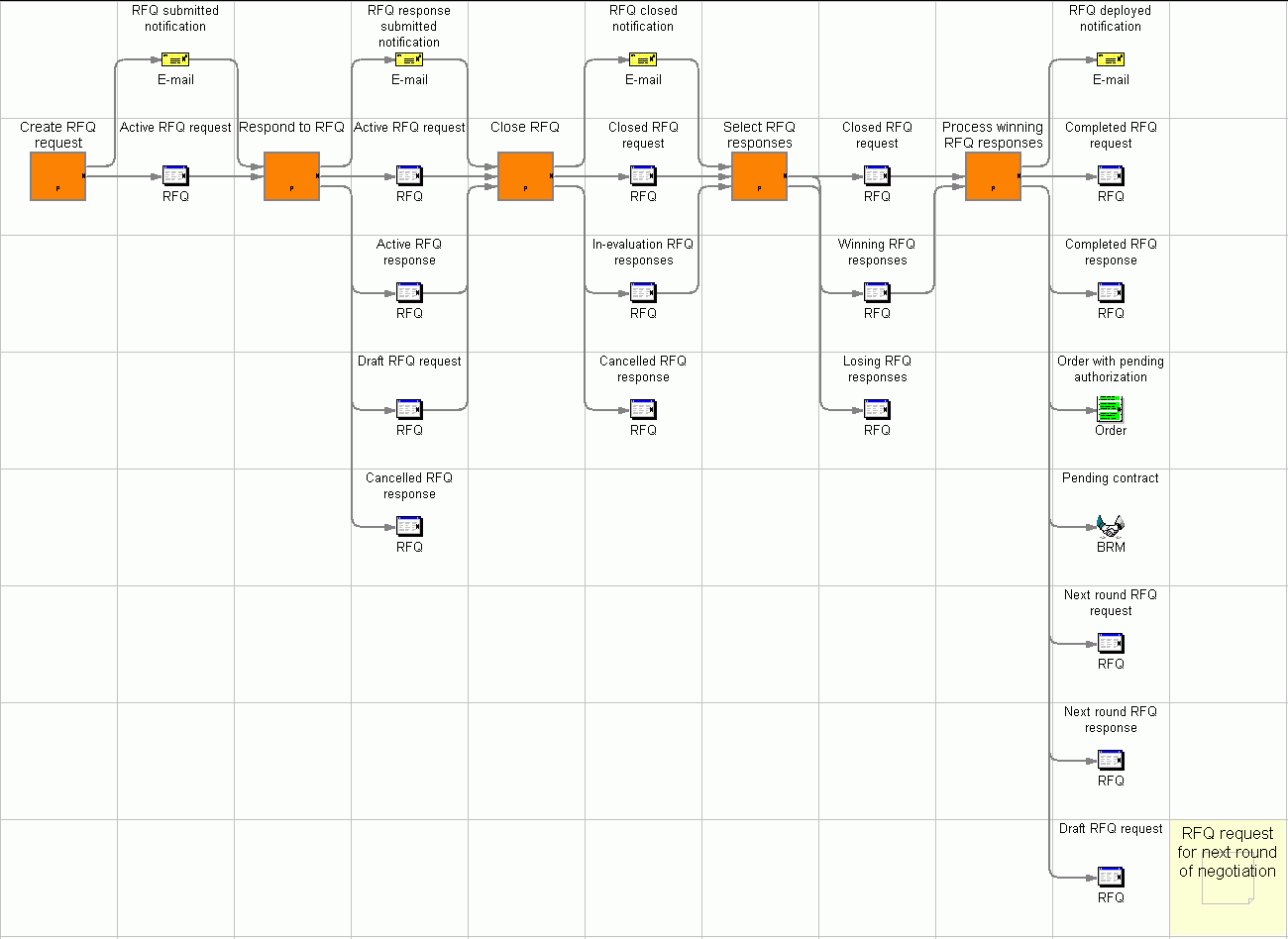Process: Single-seller RFQ
Flow

Objective
Obtain quote for a contract or a one time order for a product different than those found in online catalog in a single-seller environment.
Description
The RFQ process is a business flow comprised of many stages or states that trading partners must pass through as they negotiate. The final state in a successful negotiation is a contract or order, as specified by the buyer. A buyer can create an RFQ for unique variations of goods and services that are offered in the catalog. If buyers cannot find a product matching their needs in the catalog, they can select attributes from the set of personalization attributes predefined in the catalog. Buyers can include multiple products in one RFQ, and define unique specifications for each product.
Buyers can initiate RFQ either by directly adding products/categories to the RFQ, or by first creating a shopping cart, and then create a RFQ based on the contents of the shopping cart. They can include categories or products for percentage price adjustment or fixed price negotiation. They can include attachments on the RFQ or product specification level. They can also specify the terms and conditions for the transaction. When the buyer submits an RFQ request, it is placed into a "future" or "active" state. A seller can view the RFQ and submit a response when the request is in an "active" state. A buyer can also change or cancel an RFQ.
When sellers respond to an RFQ, they have the option of responding to each attachment, terms and conditions, and product, as well as to each product specification or comment. They have the option of substituting a product if the buyer has provided that option in the request. A seller can also modify or cancel a response.
Once sellers have responded to the RFQ, the buyer closes the RFQ and evaluates the response. When the RFQ response is accepted by the buyer and the seller is notified, the RFQ transaction is completed through one of the following processes:
- The buyer places an order that contains the RFQ information.
- A contract containing the RFQ information is created.
- The RFQ can go to the next round.
Features
- An RFQ can be for a contract or an order.
- Buyers can include attachments in the RFQ.
- Buyers can include terms and conditions in the RFQ.
- Buyers can include categories for percentage price adjustment in the RFQ.
- Buyers can include items, packages, products or dynamic kits in RFQ for percentage price adjustment or fixed price negotiations. Dynamic kits can only be added from shopping cart.
- Categories and products may only be included from the catalog if the RFQ is intended for a contract.
- Buyers can include made-to-order items in the RFQ.
- Buyers can provide customized product specifications in the RFQ for customized items and packages.
Edition
Enterprise
Subprocesses
Business artifacts
- Active RFQ request
- Active RFQ response
- Cancelled RFQ response
- Closed RFQ request
- Completed RFQ request
- Completed RFQ response
- Draft RFQ request
- In-evaluation RFQ responses
- Losing RFQ responses
- Next round RFQ request
- Next round RFQ response
- Order with pending authorization
- Pending contract
- RFQ closed notification
- RFQ deployed notification
- RFQ response submitted notification
- RFQ submitted notification
- Winning RFQ responses
(C) Copyright IBM Corporation 1996, 2006. All Rights Reserved.